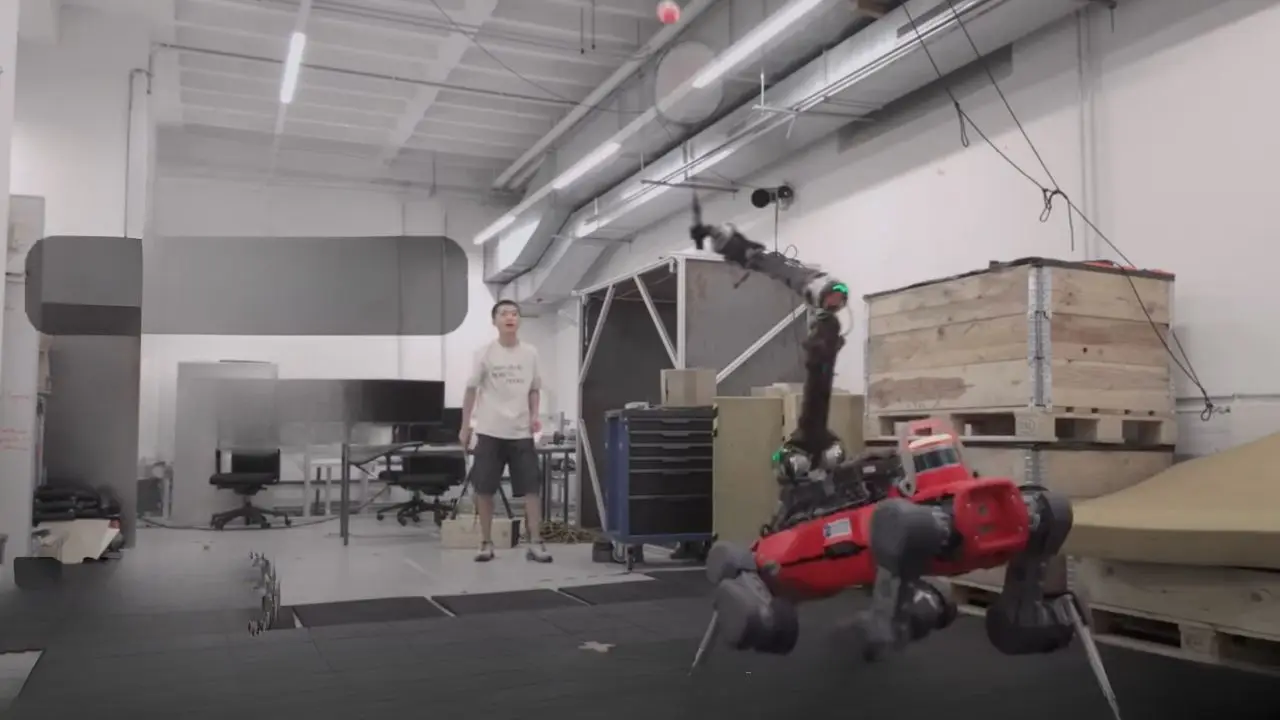Four-legged robot ANYmal-D plays badminton with humans using AI technology

At ETH Zurich’s Robotic Systems Lab, engineers have developed a groundbreaking four-legged robot named ANYmal-D that can play badminton with humans. This innovative project combines robotics, artificial intelligence, and sports, showcasing the potential for advanced robots to engage in dynamic and fast-paced games.
ANYmal-D is equipped with four legs for stability and agility, a dynamic arm to swing the racket, and a stereo camera to track the shuttlecock. The robot utilizes a reinforcement learning-based controller that enables it to predict and react to the shuttlecock’s movements in real-time. With this technology, ANYmal-D can move around the court, adjust its posture, and time its swings to keep rallies going with human players for up to 10 shots.
The stereo camera serves as the robot’s eyes, continuously monitoring the shuttlecock. ANYmal-D uses a perception noise model to compare its visual input with training data, allowing it to track the shuttlecock even when it moves unpredictably. The robot can adjust its body position to keep the shuttlecock in view, mimicking the movements of a human player.
To coordinate its legs and arm effectively, the ETH Zurich team developed a unified control policy using reinforcement learning. This system was trained in simulation, enabling ANYmal-D to handle a wide range of shots and scenarios before engaging in actual gameplay.
ANYmal-D combines a quadrupedal base with the DynaArm and a racket set at a 45-degree angle for optimal striking. The robot’s state estimation, control policy updates, and perception system operate at high frequencies, running on a Jetson AGX Orin module to ensure responsiveness and readiness for action.
Challenges in playing badminton with a robot include integrating leg and arm movements seamlessly. By merging locomotion and arm control into a single system, ANYmal-D can adjust its posture and gait based on the shuttlecock’s trajectory, enhancing its agility and adaptability on the court.
The robot’s perception-aware controller enables smooth camera movements to track the shuttlecock effectively. This technology bridges the gap between simulation and real-world matches, enhancing the robot’s reliability during gameplay.
Despite practical challenges such as power limits and communication delays, ANYmal-D successfully engages with human players on the badminton court. The robot demonstrates adaptability and skill, responding to different shot speeds and landing positions to maintain rallies with impressive consistency.
In collaborative games with amateur players, ANYmal-D showcases its ability to track, intercept, and return shuttlecocks efficiently. While it may not return every shot, the robot’s performance highlights the advancements in robotics for dynamic sports scenarios.
As robotics technology continues to evolve, robots like ANYmal-D could become valuable partners in various sports and activities, enhancing play and teamwork experiences for everyone involved. Whether playing against a robot or a human opponent, the integration of robotics in sports opens up new possibilities for collaboration and excitement on the court.




